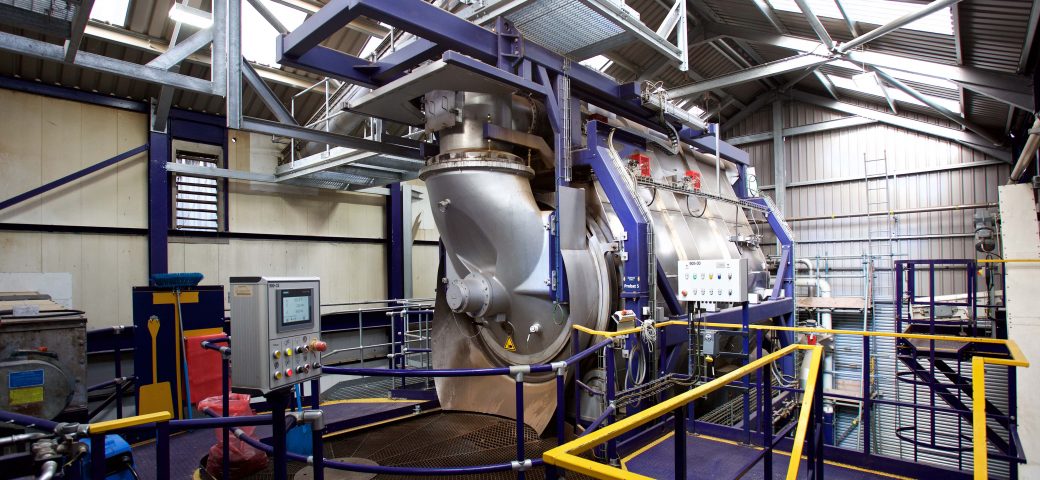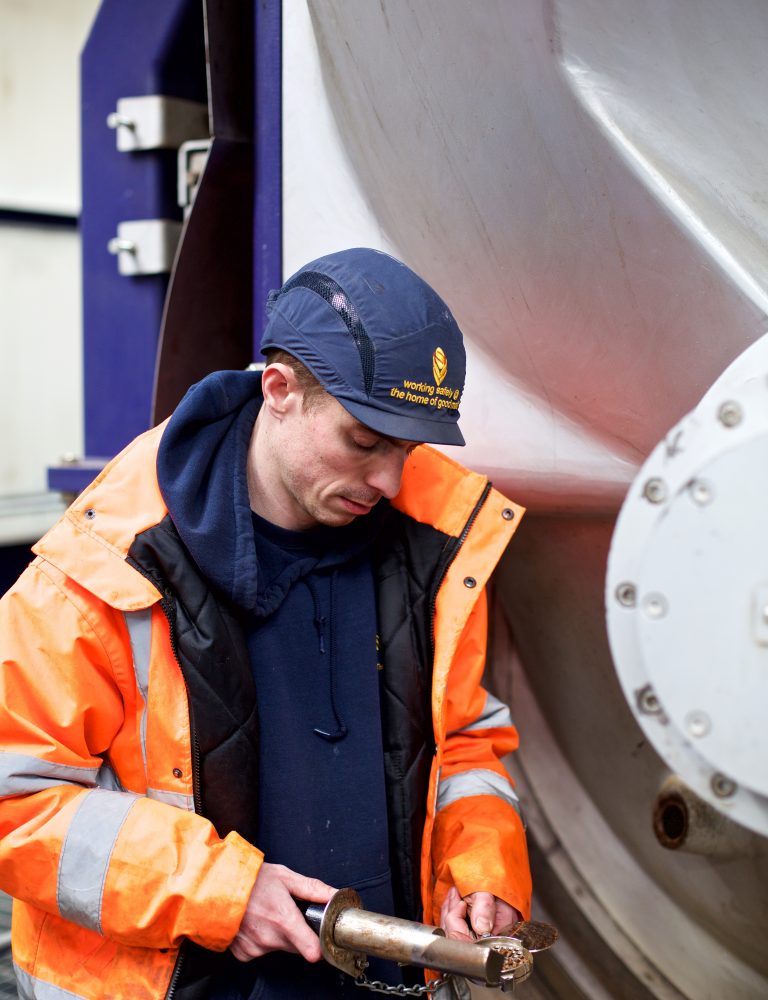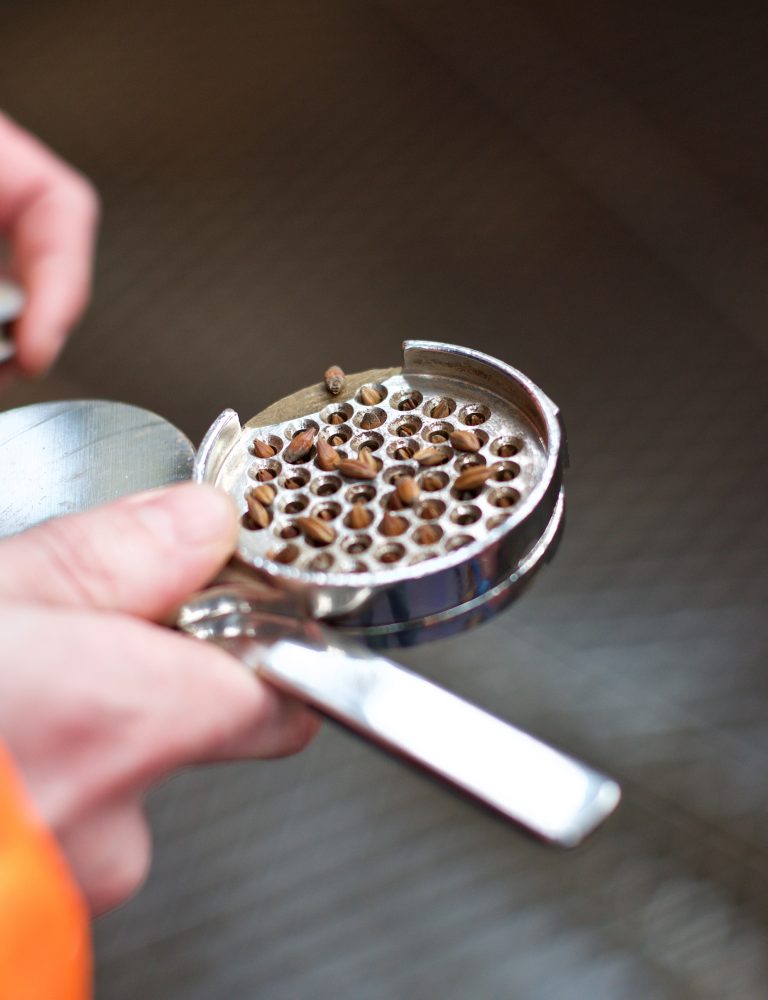
It’s in our state-of-the-art Roast House where most of our high-quality malts are produced.
Our Roast House is located within our Tivetshall St Margaret Maltings and the building contains five roasting drums, which produce our extensive range of crystal and roasted malts, as well as some of our other speciality products.
Our roasting drums and their capacities are as follows (our plan is to give them names one day, but for now they just go by the name of their manufacturer!):
Barth – Produces 1.6 tonnes of crystal malt every four hours.
Probat 3 – Produces 1.8 tonnes of crystal malt every four hours.
Probat 4 – Produces 1.8 tonnes of crystal malt every four hours.
Probat 5 – Produces 2.8 tonnes of roasted malt every two-and-a-half hours.
Probat 6 – Produces 2.8 tonnes of crystal malt every four hours.
Green malt vs chit malt
Firstly, the type of grain used to make each category of product differs slightly.
All crystal malts are produced using green malt, whereas all roasted products are produced using chit malt. Roasted Barley is an exception to this, with that – as the name suggests – made from raw barley.
Green malt is barley that has been steeped for two days and germinated for four days. This is essentially the first two stages of the standard malt production process, with the roasting phase in a roasting drum replacing the kilning phase in a germination and kilning vessel (GKV).
Chit malt, meanwhile, is barley that has been steeped for two days and then cast on to a GKV and kilned immediately for 24 hours.

Crystal malt production
In the production of crystal malt, the green malt enters the roasting drum still wet from the germination vessel (GV) or germination drum and the stewing phase takes place.
During this time, the starchy interior of the grain is converted into sugars. This leads to the endosperm becoming liquefied and the grains will pop if you squeeze them. This is a sign that the stewing phase is complete.
Once our team of expert roasters are happy with the stew, which they analyse on a batch-by-batch basis, the moisture needs to be driven out completely. This is done by applying direct heat and carefully increasing the temperature.
This is where the colour and, more importantly, the flavour, is produced. The temperatures and times used for the different products are a closely guarded secret, although both vary in order to achieve the different colours and flavours that make up our extensive range of caramalts and crystal malts.
Only when a member of our roast house team is happy with the product, with a sample taken from each batch and analysed, is the drum discharged and the grain rapidly cooled, giving us the finished, crystallised malt.

Roasted malt production
For the production of our roasted malts, the chit malt enters the roasting drum at around 4% moisture, having already gone through 24 hours of kilning.
The chit malt grains have good, firm husks, making it easier for them to withstand the intense heat needed within the roasting drum to produce our Brown Malt, Chocolate Malt and Black Malt products.
The aim during this process is to gain colour without charring and, just like for our crystal malts, the temperatures and times used for the different products vary slightly in order to achieve the different colours and flavours.
When the grains are ready to be discharged, because of the intense heat, they are very close to combustion point. As a result, a period of cooling with water sprays is essential to avoid spontaneous ignition on contact with air.
For all crystal and roasted products, once the malt has been discharged from the drum and analysed, it is then blended with other batches to create a bulk, from which we supply our customers. We have very narrow blending parameters to ensure the specification is as tight as possible.
After that, the malt is transferred to our Bagging Hall, where it is packaged up and sent out to our customers across the world.
